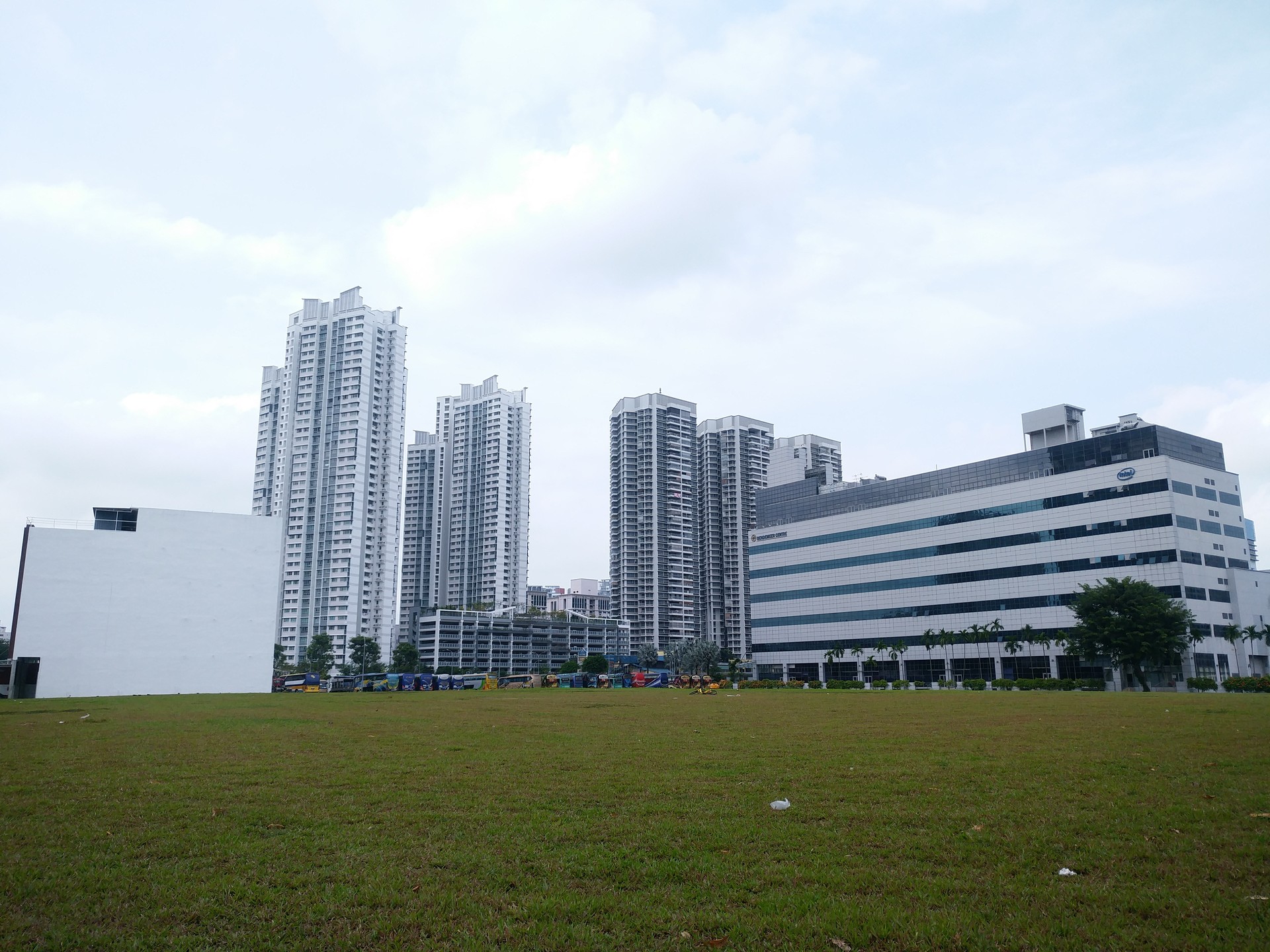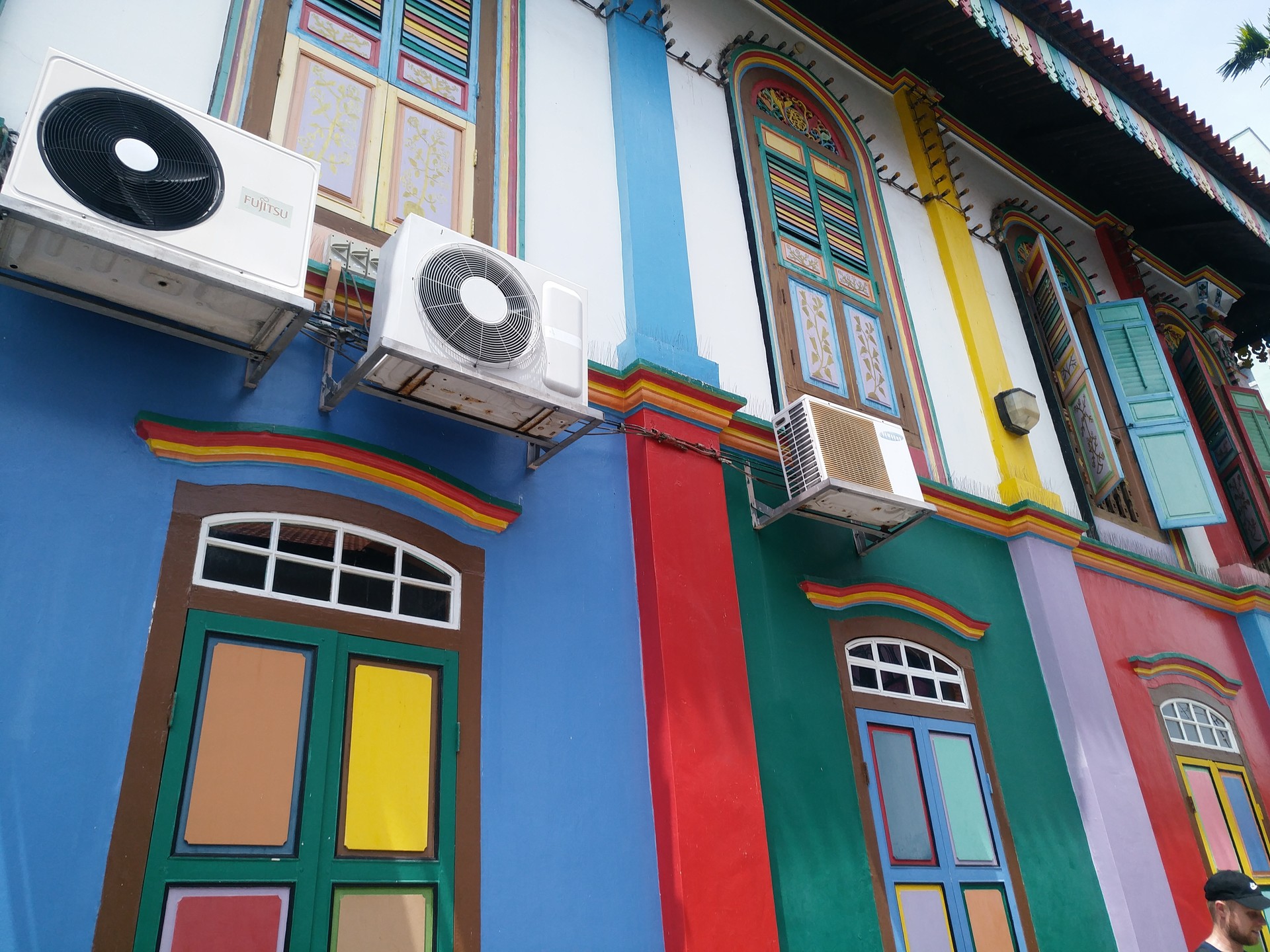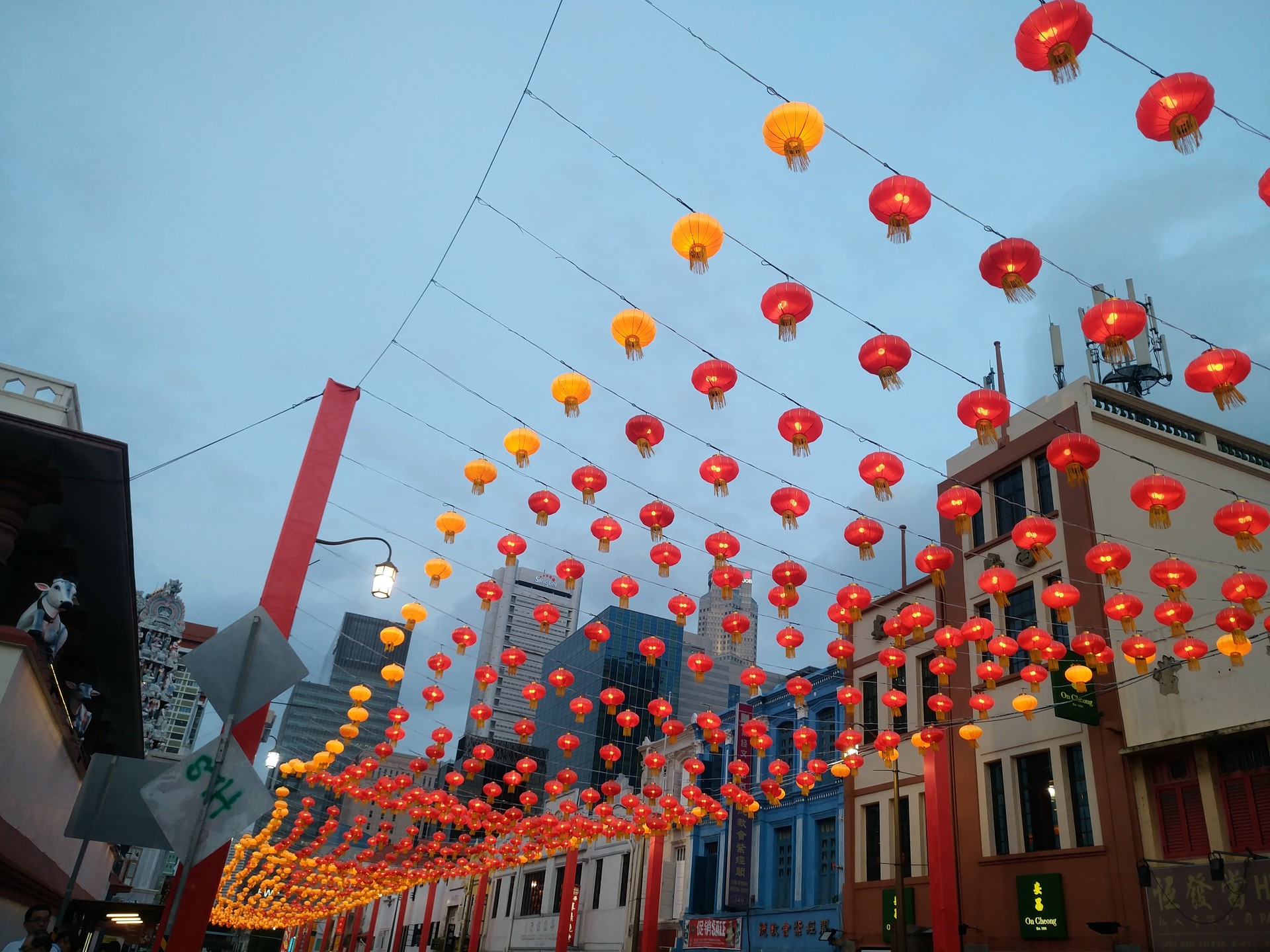Adventures in Singapore, part 4
1. Accommodation (in general)
So, it's time to talk about hostels! I did far too much research on this, and ended up in what was actually my second choice -- my first choice, Footprints Hostel, ended up being booked while I was still looking -- and because I'd booked late a lot of good places were gone already.
I do my bookings on Booking.com, since they give you discounts if you're a "Genius" member (i.e. if you've travelled a lot with them before) and they've got a good filter search and easy information access.
Agoda tends to have additionally taxes/fees added on that aren't included in the original search prices, and Airbnb is a toss-up for when it works or doesn't, since sometimes people cancel on you and are more judgey in general. Which is fair, if they're letting you into their home, but not my cup of tea. I don't like worrying about whether or not I have solid accommodation set up.

This pic is horribly blurry, but the point is that hostel reception desks frequently have info that tells you loads about the city, and they often even have free walking tours
What I generally look at to judge hostels is, in no particular order:
1. Price: for obvious reasons.
2. Distance to the city center or areas of interest: you want to be close to where the action is, and if you can walk there, even better. This really matters when public transportation is expensive or difficult to use/understand.
3. Metro/public transportation access: majorly important, especially if you've got luggage. I don't care how nice a place is, if it isn't easily accessible, it's just too much trouble. Particularly for hostels, which I use just as a place to sleep and so don't spend much time in because I'm out looking around and see the city.
4. Ratings and reviews: booking.com shows the overall rating of a place, and then you can also read the individual reviews that gave it that rating, and see what it's really good for. For instance, sometimes the location is great but the beds are super hard, or something like that. I try not to stay in places that are so new they have no/few ratings.
5. Facilities: whether places have irons for use, lockers, or free luggage storage, for example. Luggage storage in particular is really handy because it means you can check out at the usual midday times but still leave your luggage there and travel around unencumbered, and then pick it up in the evening or whenever your flight out is.
6. Free breakfast: this often depends on the city though, some places food is expensive and you want the free breakfast, other times you want to save your stomach space to try out cafes or restaurants. However, in general, if it's free and included, why not?
7. The number of beds available: the fewer the better if you're introverted, but if you're the type that likes making friends and meeting new people then this is a great way to get to know others.
8. If it's mixed or female-only: mixed means both men and women are booked in the room, and so sometimes gets a bad rap and is myabe safer to avoid if you're a solo female traveler. However, all the guys I've met in mixed rooms are perfectly nice and friendly and I've never ever had a bad experience.
I don't like to generalize, but guys in hostels also sometimes tend to be more outgoing and talkative, and a little less likely to travel in groups/pairs than women. The ones I've met are really willing to strike up a conversation or invite you to join them if they're doing some activity, so if you want to make friends or get to know more about the potential experiences/opportunities in a new city or other countries, a mixed room really is a great option.
9. Images and pictures: one of the best ways to figure out what you're actually getting yourself into is to see it. It's important to see the bathrooms and rooms, types of beds, etc.
10. Check-in/out times: This is normally not a big deal unless you have a tendency to oversleep and check-out 'late' and they have a strict payment policy or if you're coming in late and their desk is closed.
For example, sometimes the desk/reception for hostels close around 7-8 pm. In a lot of cases you can message them and get the info to enter anyway, but if you haven't asked and prepared for that, you can't get in.
That happened once to me, when I arrived at midnight. If I hadn't already gotten a SIM card and wi-fi and so been able to contact them, that situation could've gone really badly. Now I always check.
11. Wi-Fi: The only time this is not important is when you have an unlimited/extremely cheap data plan going on.
2. My accommodation

The main reason I chose my hostel: close access to public transportation, in this case, the Bendemeer MRT station
Anyway, I ended up booking Rucksack Inn @ Lavendar Street. They're ok, but not fantastic. They're relatively cheap, not too close to the city center but okay (2.7 km or so), and about a 3-5 minute walk from Bendemeer Station (on the Blue MRT line, which seems to be the most important/useful line). There are two bus stations nearby.
The breakfast was mainly toast and spreads for it, though they do have orange slices. I chose them because I needed the Blue line, their free luggage storage, and the iron they supposedly had (I was going to visit the ASEAN career fair, so I needed to make sure I looked decent). Turns out the iron is pretty awful, and they don't have an ironing board, which kind of ruined that. I ended up ironing on their kitchen counter.
They do have a nice little rooftop area. The view isn't spectacular but at least it's there and you get a breeze and some open air. It's comfy enough to laze around for a bit, with sofa-beds and tables.
3. Things to do, see, and eat: Little India

The Tan Teng Niah house, with an interesting mix of colors
You can get to Little India by the Little India (DT12) MRT station, which is also on the Blue line. That drops you off right onto a major road, and turning right will take you to Tekka Center, which is the main market, and sells both food and goods.
Nearby there, is the Tan Teng Nian house, which is very colorful and makes for a good photo-opportunity, but you can't go in or do anything other than see it. Still, it's so close-by that it's worth the walk.
From here it's about a 3-4 minute walk towards the Sri Veeramakaliamman Temple. I didn't go inside actually, because at this point I was a little fatigued from seeing all the religious stuff a day earlier and I was hungry.
I walked back towards the Gokul Vegetarian Restaurant, since I'm vegetarian. That's one really good thing about Little India: there are so many vegetarian food options and restaurants, which makes eating out here really easy. For example, I was also tempted by the Komala Vilas Vegetarian Restaurant near Tekka Center, but I figured I'd go see that one temple real quick.
After that, I kept walking to the main Little India (or at least, there's where Google Maps puts the Little India center as), on Campbell Lane. The area was pretty colorful, but there really wasn't much to do, just see.
I was planning on circling around to Tekka Place, which is a shopping mall there, but in the end I figured I still had lots to go and I didn't want to wear myself out. There's only so much walking I can do, and the day was nowhere near ended.
4. Things to do, see, and eat: Chinatown

Strings of lanterns over a street in Chinatown
After I checked in and left my bag, I went out again to visit Chinatown. It's also accessible from the Blue line, from the Telok Ayer station, but I actually transfered from the Blue line over to the Purple line so I could get off at the purple Chinatown (NE4) station, which exits directly onto the Chinatown market.
I first wandered around the Chinatown area, looking at all the stalls and things being sold. Pagoda Street is the most famous and touristy road, but the two on either side of it are good also. Some places of interest there are the Chinatown Street markets for shopping and souvenirs and the Chinatown food street for, obviously, food. As its name suggests, it's full of food street vendors.
There's also the Chinatown Complex and the Chinatown Hawker Center, though to be honest I couldn't quite tell where one began and the other one ends, I only know that there was a huge food court and tons of food options/stalls there. Really, there were so so many types of food available. The upper levels were basically just all food stalls. It was really pretty cheap too.
I ended up eating one of the Singapore delicacy type of foods, called 'carrot cake'. It was neither a cake nor contained any carrots. It was made with radishes and soy sauces and egg and was savoury. It tasted somewhat like a Thai dish we have called kwit teoy.
After all this I visited what's known as the Buddha Tooth Relic temple, but was too late to go see the main floor and attraction, on the fourth floor and could only wander around the bottom floor. If you plan better than I did though, you could take the free tours they have in English, though you need to you pre-register for them. They also give out free vegetarian meals. Admissions is free.
Nearby here is the Chinatown Visitor Center, which you actually should probably visit first and before everything else, so they can give you good advice. By the time I got there, it was also closed.
5. The Downtown/Bay area

Afterwards I came back, got changed, and met up with Ja! We got dinner and then walked around what's the main business area I guess, where the Merlion and harbor and Marina Sands Bay and all the companies are. There are loads of people jogging around there, and there's a pier to relax on with lounge chairs. That whole walking area is called The Promontory.
When I was there they were apparently holding their bicentennial festival, and their theme was apparently 'light'. So there were lots of lights and light-related events and art all around, which was pretty. They actually had maps of where the art/light installations are, and we walked around to see as many of those as we could, which meant doing a kind of circle.

The bridge all decorated and lit up for the bicentennial festival
We started at The Promontory, and heading west and up towards the Merlion, which was lit up with different colors and shapes. Then we crossed over the Esplanade Bridge right next to the Merlion, and ended up right at the Esplanade (a mall on the beach front), where they hold free concerts in the evening/night. There was one going on when we arrived, but frankly it was very loud, so we didn't hang out listening to them for very long.
Instead, we went into the Esplanade and up onto the roof, where there's a garden sort of area perfect for relaxing. We saw small groups of young people just hanging around chatting and catching the breeze from the bay there.
Then we continued walking on the beach front area towards the Helix bridge, which was shining with lights and completely stunning, probably the best of the light exhibitions I saw. I heard from Ja that actually it isn't normally lit up like that, it was just the festival sort-of thing, but even still, the design was interesting enough that even still it would be nice to stroll by and see.
All of these areas were designed for walking, so that's totally not a problem either. There were loads of other pedestrians: families, couples, groups of friends, solo people walking for exercise, etc.
If you timed this right, you could end up seeing the Spectra light show at Marina Bay Sands, or even the Supertree Grove light and music show (incredibly gorgeous and peaceful) at the Gardens by the Bay. However, we weren't in time for the Spectra show, and I'd already seen the Supertree Grove light show anyway.
Plus, at this point we were both pretty tired. The Bayfront station has access to both the Blue and Orange MRT lines, so that was a great place to stop our walking and start heading home.
Photo gallery
Want to have your own Erasmus blog?
If you are experiencing living abroad, you're an avid traveller or want to promote the city where you live... create your own blog and share your adventures!
I want to create my Erasmus blog! →





















Comments (0 comments)